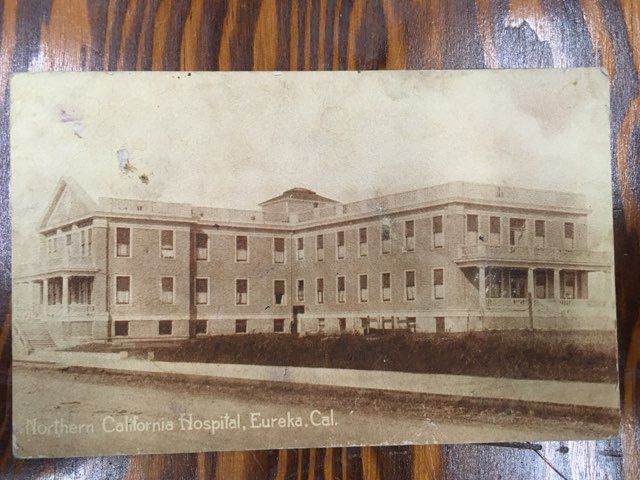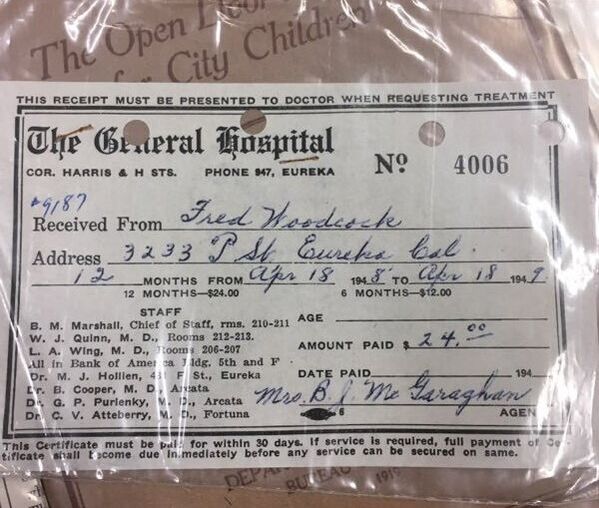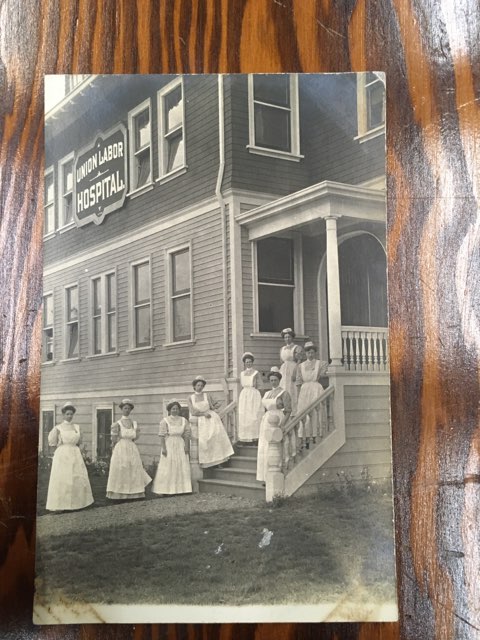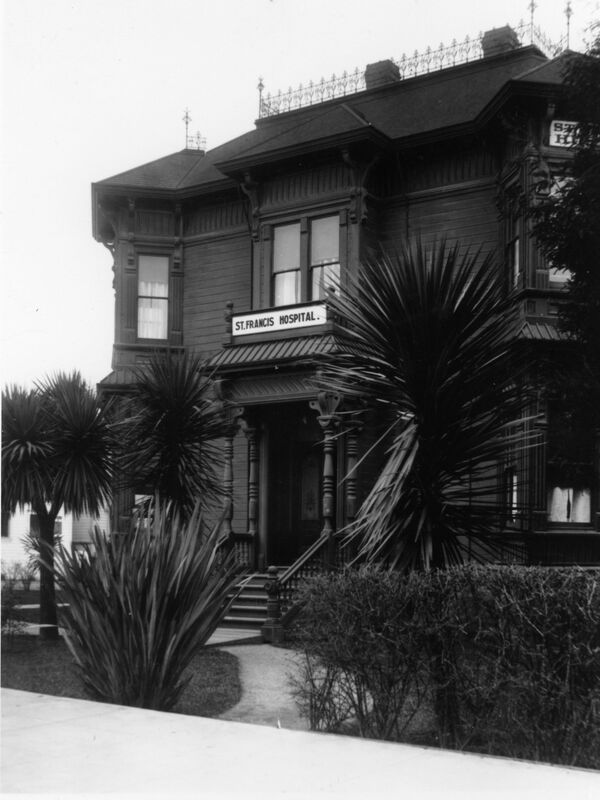Northern California Hospital
| Even though the area was growing, in a place like Humboldt county, you can never get too far without finding a name you recognize. Charles and Curtis Falk of the Falk family known for their lumber operation and a variety of other endeavors, became local doctors who jointly opened a hospital in 1906 called the Northern California Hospital, located at the corner of Trinity and F Streets. They took pride in their hospital stating that it “incorporated all the modern ideas and scientific principles, such as ventilation, sanitation, light and heating” and was open for use by the public and “reputable physicians”. Additionally, it was a training hospital for nurses. Charles, the eldest, served as the hospitals president and lead surgeon, which Curtis, the youngest, was the hospital’s secretary and assistant surgeon. After five years in this arrangement, however, trouble was brewing between the brothers. |
Union Labor Hospital
| When Union support subsided, the hospital teamed up with additional unions to support the hospital and encourage people to be treated there. The board of the hospital opened up to include a union representative from each American Federation of Labor union, which had absorbed smaller local unions like the International Brotherhood of Woodsmen and Sawmill workers. It was noted as a high quality hospital with knowledgeable staff and clean rooms and was very popular locally. When it sought to build a home for nurses adjacent to the hospital, patients donated $20,000 to the cause. The hospital, which changed its name to General Hospital sometime around 1954, continued to serve patients through the year 2000, when it was purchased by another operator. |
St. Francis Hospital
| Across the street from the Humboldt County Historical Society is a unique looking Victorian home- its entryway facing the corner of the city block it sits on. This was the former Ricks house, considered one of the greatest examples of Eastlake architecture in Eureka. The Ricks were a wealthy family, Thomas Ricks was a business and land owner and Eva Ricks was an extensive landowner in her own right. The home was leased to the board of St. Francis Hospital in 1907, and some documents noted as the first privately owned hospital in the County, although it seems that Northern California Hospital may actually have that title. The hospital treated workers from the mills, docks, and factories and operated for three years, during which it conducted an “unprecedented kidney operation” and was widely regarded as a top hospital in the area. Due to poorly managed finances, it merged with Sequoia Hospital, which operated until 1925 when it was closed and the building leased to the Young Women’s Christian Association. |







 RSS Feed
RSS Feed